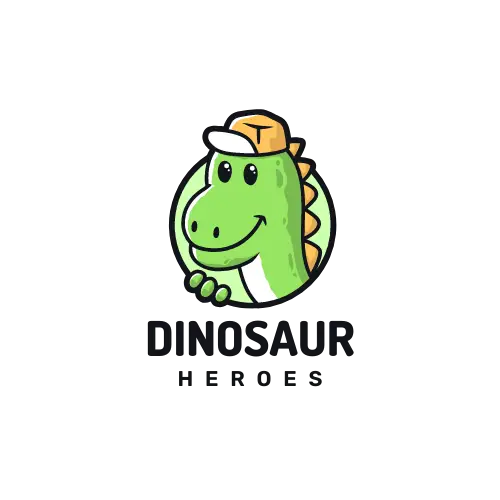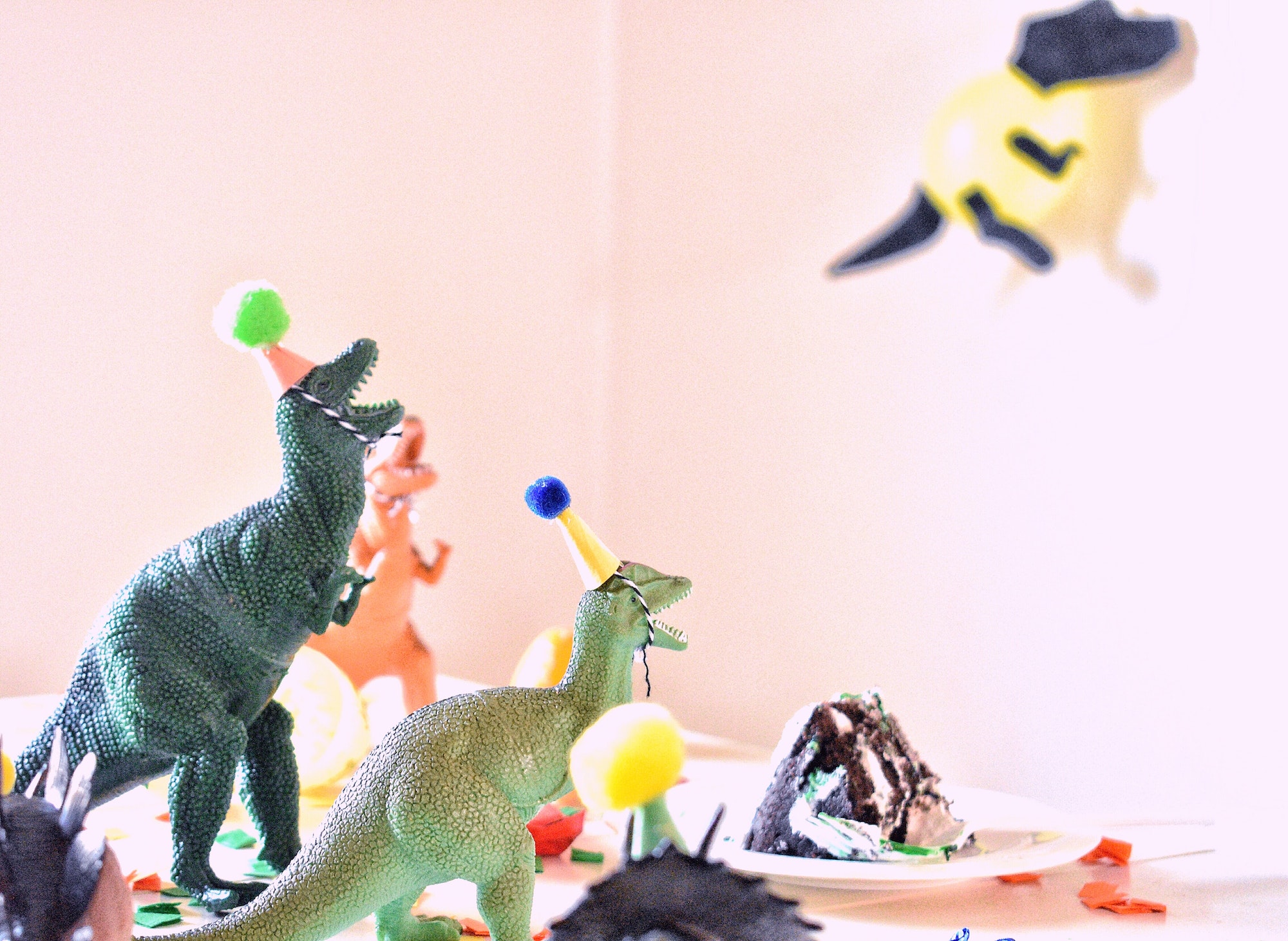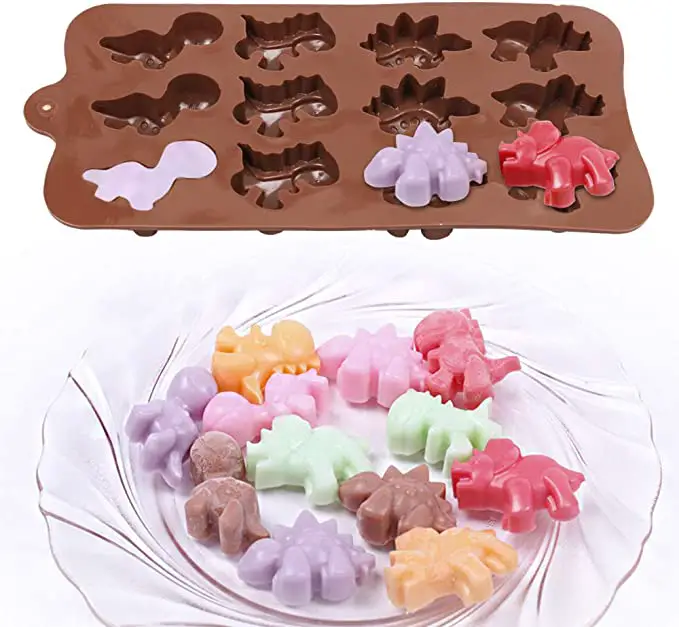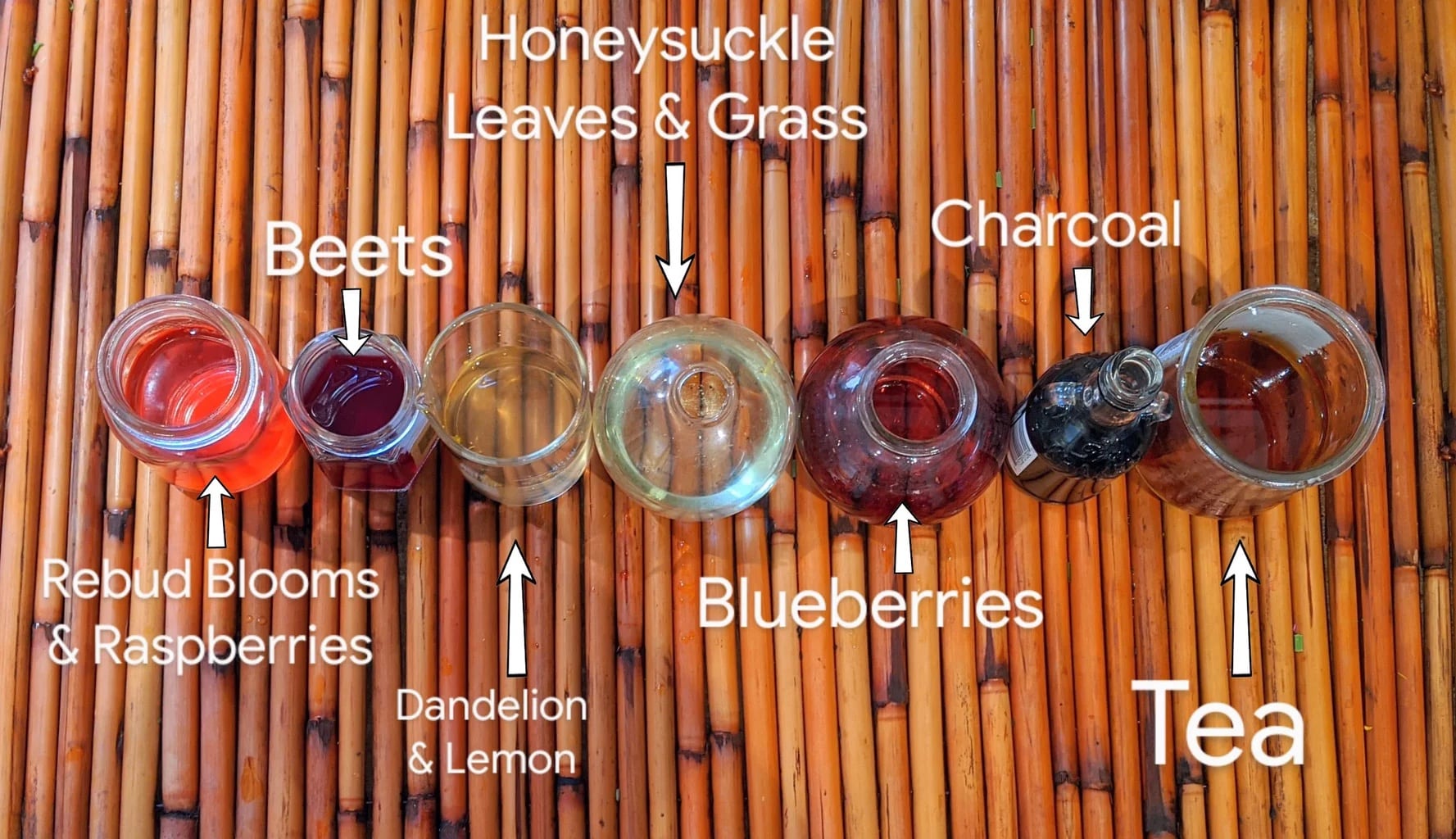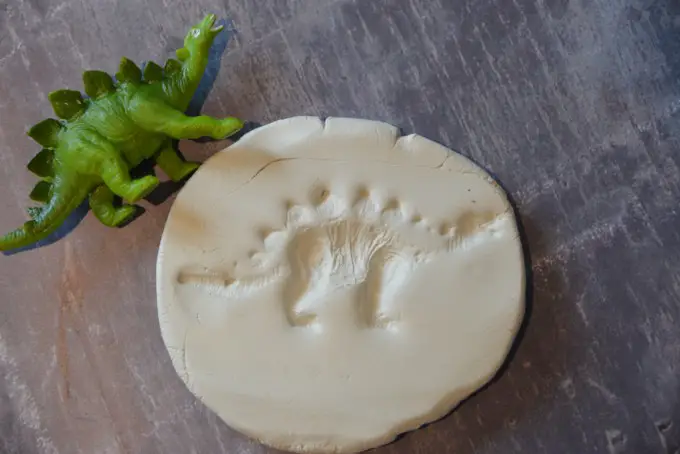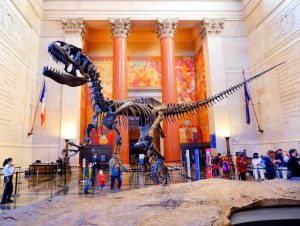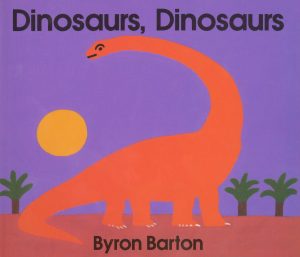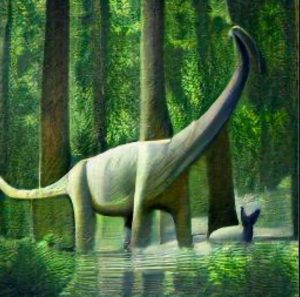Dinosaur is an incredibly diverse topic that provides lots of learning opportunities for children, whether they are young preschoolers or school-aged children. It is also a fun and engaging way to get children, even preschoolers, excited about science!
In this article, we included a huge list of dinosaur-related STEAM concepts you can teach your kids, along with how you could incorporate them into your daily activities to further your children’s interests.
What Children Learn About Dinosaurs (And Exciting Ways To Teach)
Children learn many interesting concepts about science and the world through dinosaurs, including the idea of animal life cycles, body parts, the process of fossilization, and natural selection. And it is never too early for children to learn.
Given how popular dinosaurs are with kids, it is natural to want to incorporate some active learning while kids play with or watch their favorite dinosaur TV programs like Dinosaur Train, Peppa Pig, Jurassic World.
Related Post: 8 Benefits of Playing With Dinosaurs (Including Play Ideas)
What to teach preschoolers about dinosaurs
Pre-schoolers – typically children aged 3 to 5 – are an incredible bunch. Their world is full of wonder. Every day is full of new ideas and challenges as they watch, observe and absorb what is going on around them. That’s why here at Dinosaur Heroes, we do not think it is ever too early to start teaching kids real-life concepts about the world in which they live – to help them categorize and make sense of the world that is happening around them. However, we might want to adapt the language we use to pre-schoolers in a way that they can understand easily.
Science
- Dinosaurs, like animals, need different types of food
Some animals, like Brachiosaurus, like eating leaves, whereas animals like the famed Tyrannosaurus prefer meat. You can usually tell them apart by the shape of their teeth, meat eaters usually have sharp fangs! Try asking your child what they think a human should eat, and what is his or her favourite food.
Activity Idea: Here is a fun sorting activity to download and play. - Some animals are predators, some are prey
Your child is now learning ecology, how exciting is that! A predator is an animal that hunts, captures and eats other animals, and an animal that a predator hunts is called a prey. Don’t be fooled by size either. Even the tiniest creatures, like meat ants, can be predators. - Offsprings tend to look like parents
We (usually) look like our parents because we inherit our DNAs from them. For young children, we can say it’s kind of like building a house using an instruction manual. Let’s say your child and her best friend is building a house, but are both using slightly different versions of the instruction manual. They will both end up with a house but the houses will look slightly different.
Activity Idea: A dinosaur mom and baby matching puzzle is the perfect game to play. - Our body parts have specific functions
Eyes help us see and ears help us hear. But what about the spikes on the tail of a Stegosaurus? Frills on the necks of Triceratops? Or wings on Pterosaurs? Every body part has its place and functions. Dinosaurs are great species for preschoolers to study because of their wide and varied shapes, making distinguishing features stand out and memorable.
Activity Idea: Start by going through the functions of our own body parts, or pick up a book like the beautifully illustrated Creative Features Dinosaurs by Natasha Durley to explore the topic. - There are different types of natural habitat
Dinosaurs who lived millions of years ago are no different to animals today. Some dinosaurs lived in a hot and dry climate, and some dinosaurs lived during the lush green Jurassic Period when many plant-eating dinosaurs evolved. However, it is commonly accepted that all dinosaurs (like humans), lived on land, even though some, like Spinosaurus, can wade and hunt in the water. - Animals parent differently from us
Humans give birth to live babies. Dinosaurs lay eggs. Dinosaurs like Allosaurus can be fiercely protective of their young. The Natural History Museum’s “Were Dinosaurs Good Parents?” is a good article describing the parenting behaviours of different types of dinosaurs.
Activity Idea: A good exercise to do here is to ask children what type of parent they think you are – are you protective, relaxed, encouraging, or forgiving? It may sound like a terrifying question to ask your children, but it could be a great opportunity to bring you closer together.

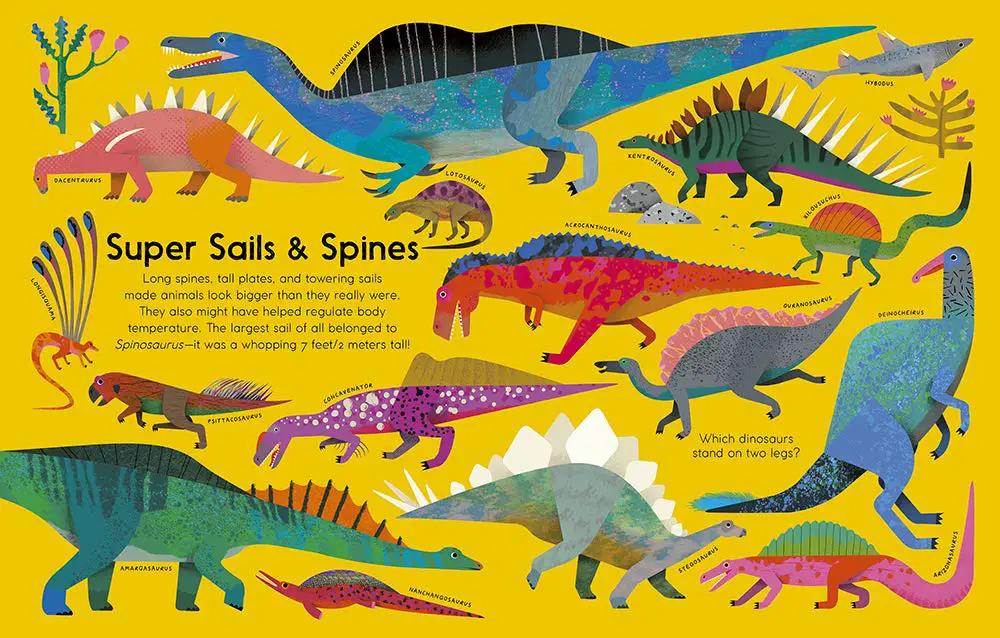
Technology
- Scientists use tools to learn about dinosaurs
Scientists that go on excavation expeditions require many tools to help them reach the fossils and extract them carefully without damaging the fossils. You can encourage your child to think of useful tools that might help these scientists. (Hint: chisel and brushes).
Activity Idea: Get a set of dinosaur excavation kit so that your child can experience the excavation process himself/herself. - Animals leave tracks and traces when they travel
Just like how we leave footprints in mud when we step in it, dinosaurs leave prints when they roamed the earth. Sometimes these prints are fossilised (hardened) and we find them millions of years later.
Activity Idea: To demonstrate leaving tracks and traces, flatten a playdough and let your child run a toy dinosaur across to leave footprints. Get the full guide here: Dinosaur Fossils For Kids (DIY Playdough method and other ideas)
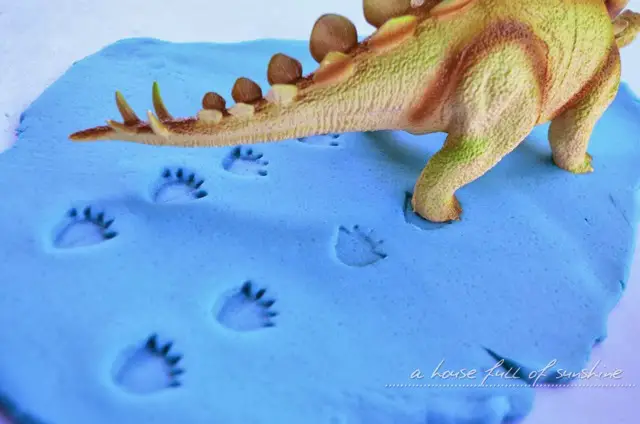
Arts
- Scientists use molds to create dinosaur models
You can teach a child how casts and replicas are created by introducing the concept of molds. Dinosaur casts are made of resin (a type of plastic), but you can create a much more delicious “cast” using chocolate dinosaur molds!
Activity Idea: Make chocolates with chocolate dinosaur molds
- The natural environment can create natural ink
Mary Anning and Elizabeth Philpot, two English fossil collectors discovered squid ink that existed during the dinosaur period. They managed to revive it to create paint.
Activity Idea: For this activity, all you need is a piece of paper with some natural ink – you can use beetroots, strawberries, blueberries, turmeric powder, raspberry, coffee, red cabbage, and of course, squid ink! Then let your child loose and watch them create their own art.
- The natural world is beautiful but always changing
From lush green forests, to powdery desserts, the natural world is a beautiful one, but it changes over time. No one knows what why we don’t have dinosaurs anymore. It could be a combination of rocks hitting the earth, volcano eruptions or climate change.
Activity Idea: Children at this age may not understand what climate change is or means, but they can learn good habits like recycling to help preserve our beautiful earth.
Related Post: How To Throw An Epic Dinosaur Birthday Party
What to teach children about dinosaurs – primary school
Older children can also learn similar dinosaur concepts as younger preschoolers. The only difference is the language we choose to use with them. Depending on your child’s understanding and vocabulary, we can use more specific terms – like herbivores instead of plant-eating animals to describe dinosaurs.
Science
- Animals are classified based on their distinguishing characteristics
Do you know that the word Dinosaur means terrible lizard? Like lizards, we classify dinosaurs as reptiles. Dinosaurs can be further categorized into different groups. They can be grouped based on what they eat (Herbivores, Carnivores or Omnivores). They can also be grouped based on the shape of their hips – If they have lizard hips they are called Saurischias, if they have bird hips they are Ornithischias.
Activity Idea: We have many ways in which we group animals in today’s world, so a fun exercise could be to take a walk down the park, spot some animals and try to group them together. - The food chain
A food chain always starts with the producer at the bottom, which is usually a plant that can make its own food. A consumer is a living thing that eats another plant or animal. Right at the top of the food chain is the apex predator.
Activity Idea: For this activity watch the BBC bitesize explainer video below.
- Scientists use specialized equipments to learn about dinosaurs
Palaeontologists keep tools like chisels, brushes, and tape measures in their tool kits for their field trips. Back at the laboratory, they have specialist equipments, like X-rays and chemicals to help them analyze their samples. - The process of natural selection
This is the process through which living organisms adapt and change. The idea is most often credited to Charles Darwin, a well-known biologist. In this theory, evolution is responsible for creating the countless species that live on earth.
Activity Idea: A fun activity to learn about the process of natural selection is a “Pick up seeds game“. For this activity you could put seeds of various shapes in a tray (pumpkin seeds, sunflower seeds and flaxseeds are good choices), and let your child pick them up using various tools such as clothing pegs, tweezers, scoops and straws. Full instructions are available on Science Sparks.
- The process of fossilisation
Dinosaur fossils are preserved remains of a dead dinosaur. Dinosaur fossils are mineralised rock replicas of a dinosaur that lived millions of years ago. They are key physical evidence of the existence of dinosaurs and as we uncover more dinosaurs we learn more about this interesting creature. Check out this BBC video and quiz you can use with your child to learn about fossilisation.
(image by Science Sparks)
Technology
- We use and develop new tech (like 3D printing, Xray imagery) to learn
Many of the dinosaurs we see in museums are casts, rather than fossils. That’s because fossils are rare – they need the right conditions to form – and they can also be easily destroyed over the years by scavengers and natural disasters. The modern dinosaur casts are sometimes made using 3D scans and prints, like the ones described here.
Activity Idea: Your child can learn how 3D printing works first-hand using a 3D printing pen to create their own toys, drawings and even a pair of glasses! - Palaeontologists use techniques like deduction to understand the world
We can’t always use our observation to learn about the world (aka watch and learn). Sometimes evidence is scarce, especially in the case of dinosaurs when they have been extinct for millions of years. This means scientists have to be more creative in how they learn. They use scientific methods like building a hypothesis (making and testing their beliefs), and deduction (guessing) to guess how dinosaurs lived. - It is important to ask questions and challenge pre-existing ideas
What we know today about dinosaurs – even what the scientists know – can be completely wrong. Sometimes when we uncover new evidence, it throws our original theory out of the window.
Activity Idea: This is a good (and increasingly important) concept to teach children, especially if they are exposed to the internet from a young age.
Arts
- We create art to describe, but sometimes exaggerate features of the subject.
To make dinosaurs look fearsome, sometimes artists add dragon-like features (like wings and the ability to breath fire) to depict dinosaurs. Sometimes we all make them bigger for movies, like the Allosaurus in the Jurassic World movies (in real life, they are no bigger than the size of a turkey).
Activity Idea: You could encourage children to create drawings that exaggerate certain characteristics of a person – for example, bigger ears for good listening skills. Remember that there is no right or wrong way to draw. Art is, after all, a form of expression. So… think like an artist!
Math and Literacy
- Dinosaurs live in the Mesozoic Era, which is about 245 to 66 million years ago
It is sometimes difficult to grasp just how long ago that is. Developing a sense of scale, such as the size of an elephant relative to a person, is an important skill for children to make sense of the world. Watch the video below to see just how big a million is. - Dinosaurs are extinct
… which means they don’t exist in today’s world. There are plenty of dinosaur-related vocabulary for children to learn, like fossils, excavation, palaeontology…
Activity Idea: Try a word game like Dinosaur Heroes Word Search Game to expand your child’s vocabulary. - We use words to help us communicate and understand the world around us
Why do we give different animals names? What does your child’s name mean? Finding our the meaning of your child’s name can be a fun exercise for him or her to do. It also teaches your child why we are very diligent in giving dinosaur names, categorizing them, and even naming the way they move… so that we can communicate succinctly to people around us.
Activity Idea: Discuss why names are important and find out what your child’s name means.
Related Post: What Age Do Kids Play With Dinosaurs (Is It Healthy?)
